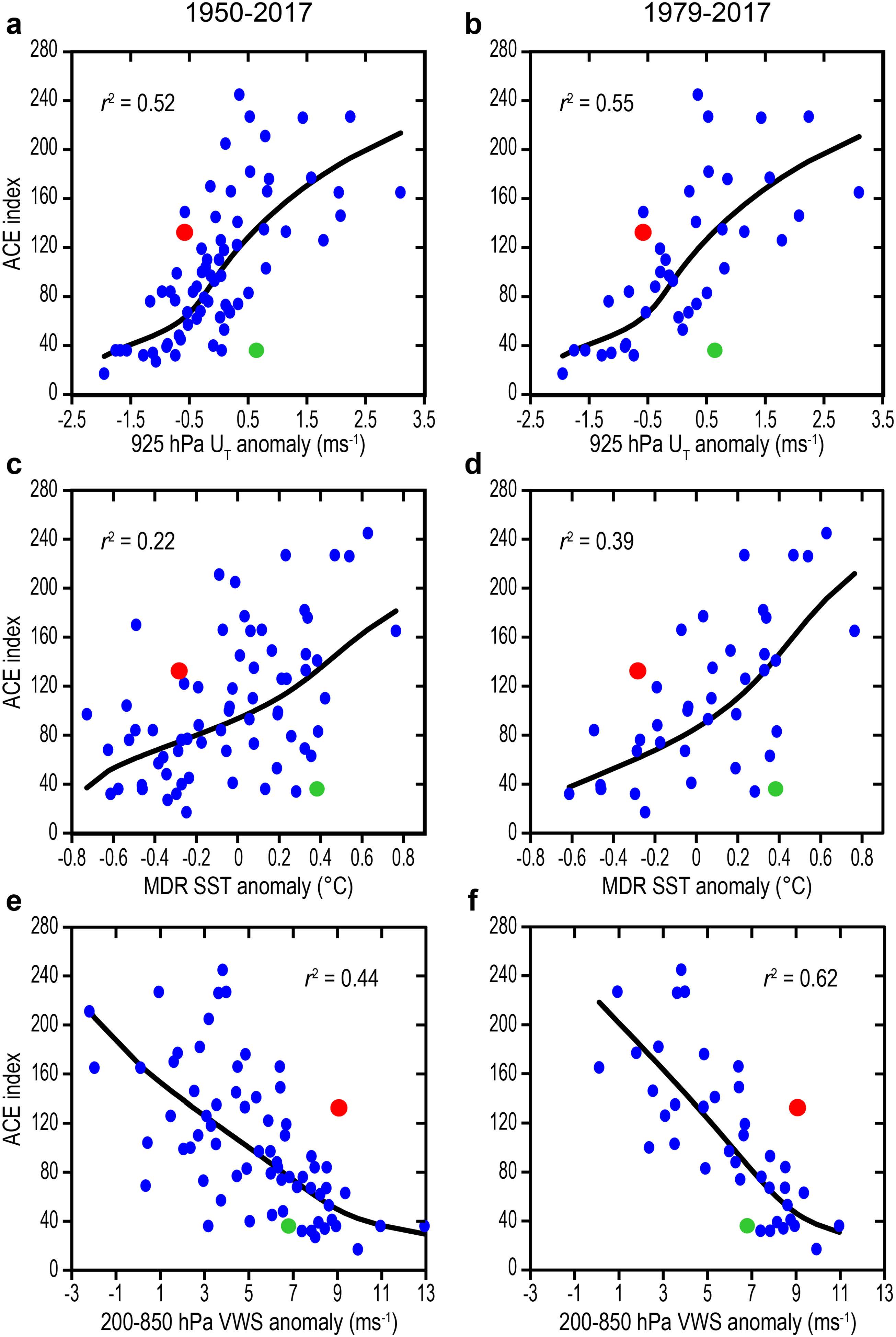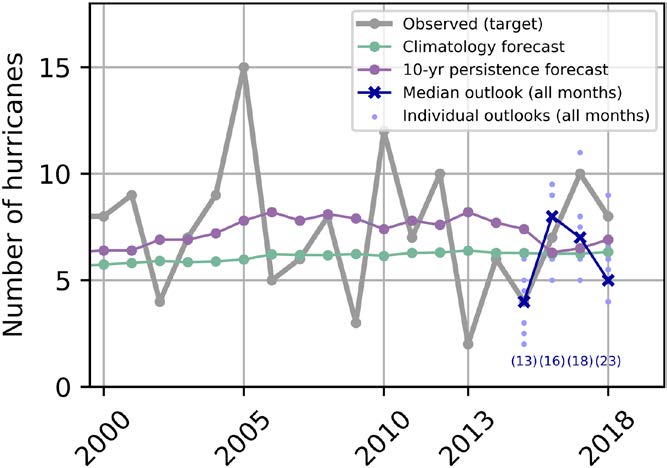Why was the 2018 Atlantic hurricane season more active than anticipated and how we can better characterize uncertainty in seasonal hurricane forecasts?
Group Members: Philip J. Klotzbach , Michael M. Bell
Our group at CSU collaborated with Tropical Storm Risk, based at the University College-London, to investigate the 2018 Atlantic hurricane season in detail. We noted that the season was more active than was anticipated by seasonal forecasts issued prior to the peak of the season (e.g., before mid-August). The season was also more active than would be anticipated given long-term historical relationships between large-scale conditions known to impact Atlantic hurricanes during the peak of the season (August-September) and Atlantic hurricanes. The season ended up above-average for most TC parameters, despite above-normal tropical Atlantic vertical wind shear, below-normal tropical Atlantic SSTs and borderline weak El Niño conditions - all of which generally lead to below-average Atlantic hurricane activity. Much of the activity in 2018 occurred at higher latitudes, where Atlantic seasonal TC forecasts generally have little (if any) predictability. Our study argues that probabilistic methods be used to issue Atlantic seasonal forecasts in future years, in order to better account for these types of outlier seasons.


